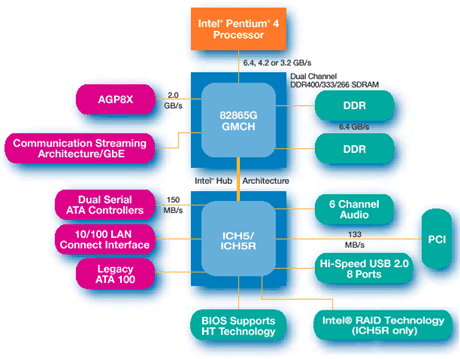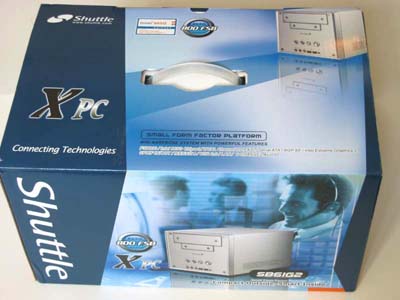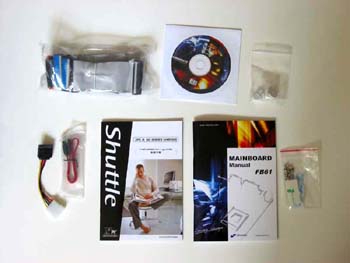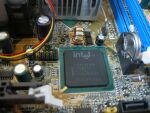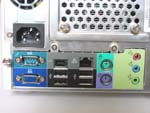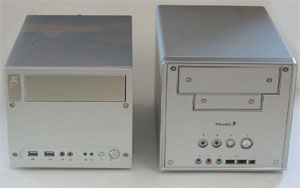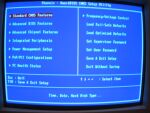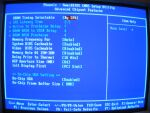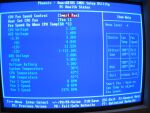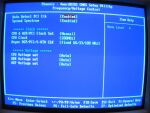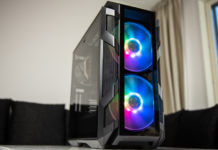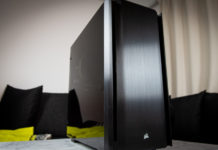Shuttle has once again raised the bar for the SFF market and at this moment we feel that Shuttle SB61G2 hasn’t any real competition.
The most obvious reason is the 800MHz FSB support that no other barebone is yet to offer. Utilizing Intel 865G (Springdale) chipset we’re also greeted with impressive performance that has no problem rivalling that of comparable desktop solutions. The performance is not quite up to par with Intel’s 875P (Canterwood) chipset but this just might change…
The SFF market
(Small Form Factor) has grown considerably during the last year and it would
be a lie to say that Shuttle hasn’t been a great contributor in this
market expansion. Shuttle received good response for their first SFF systems
and while these where solid products they had one big catch.
They could not give the same performance as a “ordinary” PC. It
wasn’t a problem in office applications though, where pure CPU and memory
performance gets the job done, but instead the graphics performance was the
limiting factor. No SFF systems at that moment had support for APG graphics
which off course was a big problem. With only more or less paltry onboard
GPU’s in the motherboard chipsets the graphics performance was not up
to par with the rest of the system, especially in 3D-applications as games
and such. You could use a PCI graphics card but both the quality and quantity
of these cards were often very low.
This was not a problem for all users but almost the entire enthusiast community
was left in the cold as serious gaming was nearly impossible on these systems.
Shuttle was painfully aware of this fact and after the SV24, SS50, SS40 models
the company launched its SS51G barebone which included an onboard AGP slot.
Since then nothing has been the same and as we predicted at the launch of
Shuttle’s SS51G barebone several manufacturers were sure to follow the
new SFF trend.
Shuttle has gotten several
new competitors in the SFF market in the last couple of months but the company
has continued to expand its product line. For example the company has launched
a couple of barebones for Socket A which not many other manufacturers have
done.
There latest
contribution to the SFF market is the Shuttle SB61G2, which we are going to
investigate closer in this review. Based on the newly released Springdale-chipset
(865) this new barebone has a few interesting features that hasn’t been
available in SFF systems before.
Let’s take a
look at the heart of the Shuttle SB61G2, Intel’s Springdale chipset.
When
Intel launched their Canterwood chipset (875) together with the Pentium 4
3.0C (800MHz FSB) the upcoming Springdale chipset (865) was already ready
to roll but Intel delayed the launch to suite it’s planed CPU releases. And
the Springdale chipset just recently entered the market together with several
new lower clocked CPU models (2.4C, 2.6C, 2.8C), all based on the new 800MHz
FSB.
Canterwood is officially the successor of Intel’s RDRAM (Rambus) chipset
850E and is primarily targeted towards the workstation market. Springdale
on the other hand is meant to replace the 845PE/G-chipset in the entry level
market. This means that Springdale is going to have an obvious price advantage
over the Canterwood chipset. The two chipsets are very similar but something
still has to pay for the price difference.
In most cases the differences between Intel’s high- and mid-end chipset
has been quite noticeable but that is not the case with Canterwood and Springdale
as we’ll show you now.
Intel Springdale
chipset schematics (865G)
Compare
the above chipset schematics with the one for Intel’s
Canterwood chipset. As you might notice the only differences is the name
of the north bridge and that the Springdale chipset also supports DDR266 memory.
In fact there is really only one thing that differs between these two chipset
and that is Intel’s PAT technology that only is available on the Canterwood
chipset. PAT or more precisely ‘Performance Acceleration Technology’
is a technology that improves the latency of the chipsets memory controller.
With PAT enabled on the 875P chipset the lower latency will give the chipset
a slight performance boost compared to the Springdale chipsets.
The theoretical differences with PAT enabled or disabled is only a few percent
so the Springdale chipset has good potential to keep pace with the Canterwood
despite its much lower cost.
Together with
the launch of Canterwood and Springdale Intel also has released two new south
bridges. The ICH5 and ICH5-R brings a few new features to the table, among
these the support for Serial ATA and 8 USB 2.0 ports are the most noticeable
ones.
The only thing that differentiates the two south bridges is that ICH5-R also
offers Serial ATA RAID support.
One other interesting
feature of the Springdale chipset is it’s Intel® Communication Streaming
Architecture (CSA) which first appeared on the Canterwood chipset. The CSA
is a dedicated network bus that connects directly to the chipsets MCH/GMCH
(north bridge) and does not put any additional load on the Hub Link 2.0 bus
that connects the MCH with the ICH (south bridge).
With the growing market of Gigabit Ethernet the dedicated CSA bus is certainly
welcome with its maximum bandwidth of 266MB/s.
To use the CSA bus manufacturers must incorporate Intel’s own Gigabite
Ehternet controller, which is a little more costly than other alternatives.
Because of this, most Springdale boards will not utilise the CSA bus to save
additional costs.
The Shuttle SB61G2 for example is not using this feature, but it’s really
hard to reach Gigabit speeds with an ordinary PC and even harder with a SFF
so it’s not that big of a deal.
Shuttle SB61G2
is using the 865G model of Intel’s Springdale chipset and this means that
the barebone uses Intel’s integrated graphics circuit. In the case of
865G, the Intel® Extreme Graphics 2 core. One new feature since its predecessor,
Intel® Extreme Graphics, is DX8 support.
Now when we have
had a brief look at the features of the Springdale chipset it’s time
for the Shuttle SB61G2 and it’s specifications.
|
Chassis
(G2) |
|
| Dimensions: |
(L)
300 x (W) 200 x (H) 185 mm |
| Front Panel: |
2
x USB, 1 x Speaker, 1x MIC, 1 x Mini 1394, 1 x Line in |
| Back Panel: |
1
x PS/2 Keyboard & Mouse, 4x USB, 1 x 1394, 1 x RJ45 |
| Extension Bay: |
1
x 5.25", 2 x 3.5" |
| Chassis PSU: |
200W,
(W) 82 x (H) 43 x (D) 190 mm |
|
Mainboard
(FB61) |
|
| Chipset: |
Intel
865G (MCH) + ICH5 |
| CPU Support: |
Intel |
| Memory: |
DDR
266/333/400, 2 slots |
| VGA: |
Intel
Extreme Graphic 2 (256-bit 3D Engine) |
| AGP: |
1x
AGP 8X |
| PCI: |
1 x 32-bit bus master PCI
|
| IDE controller: |
2 ports ATA100, 4 devices (ICH5)
|
| SATA controller: |
2
ports S-ATA150, 2 devices (ICH5) |
| LAN controller: |
Realtek
RTL8139 10/100Mbit |
| Audio: |
Realtek
ALC650, AC97 Codec + S/PDIF in/out on back panel |
| FireWire (IEEE-1394): |
2
ports FireWire 400Mb/s (VIA VT6307) |
| USB 2.0: |
6
ports (2 front and 4 back panel) |
| Other features: |
Shuttle I.C.E. heat-pipe cooling
|
| Price: |
~
$350 |
The
Shuttle SB61G2 is the third system in the company’s XPC series
that use the newer chassis layout ‘G2’ and personally we feel
that this is the best looking in the series. This is of course a personal
opinion and later in the review we will give you the opportunity to decide
for yourself.
The size of the barebone is obviously very important in the SFF market and
the SB61G2 has the exact same outer dimensions that all models have had
since the Shuttle SS51G was launched.
If we go on to
the mainboard in the barebone, it’s as we already mentioned based on
the Springdale chipset and in this case the 865G model. Why Shuttle decided
to go with the G version is not very hard to understand as still quite a few
users don’t need/want an external graphics card. At this time Shuttle
has only released one barebone without integrated graphics, Shuttle SN45G
(nForce2 Ultra 400), and this was very recently.
The Springdale chipset also offers a more powerful GPU than the earlier 845GE
chipset. The differences seem to be very small though and the question is
if the performance will be noticeably better.
The obvious benefits
of the 865G chipset is the support for the new 800MHz FSB Pentium 4 CPU’s
and DualDDR 400. Shuttle SB61G2 is the only barebone at the moment to support
these new CPU’s, but it probably won’t be long until the other
manufacturers catches up.
The Shuttle SB61G2 with it’s 865G chipset has really good potential to be
a great performer and later on we are going to compare the system against
desktop boards with the 865 and 875 chipset.
Shuttle SB61G2
also has quite a lot of integrated features and especially one new feature
is very interesting. But before we go into details about the system’s features
we will give you an overview of the price and availability for Shuttle SB61G2.
| Price and availability |
The smaller the
more expensive… It sounds just like a great contradiction but in the
world of IT this motto is often true. And unfortunately Shuttle SB61G2 is
not an exception to this motto. The most negative aspect of SFF systems is
the price premium one has to fork up to get a small but powerful PC.
Everything boils down to added development costs for these small systems.
Dealing with today’s power hungry and heat spreading components it’s
not an easy task and to fit everything in such a small package is even worse.
The more time and money spent on research and development, the higher prices
we the consumer can expect.
Shuttle SB61G2 is not very surprisingly Shuttles most expensive SFF barebone
at the moment and the price is approximately $350 US in retail. Compare this
with Shuttle’s SB51G (845GE chipset) which costs ~$270 US and you can see
that it’s not exactly cheap. And if you compare the prices to what a similar
ATX system would have costed, it gets even more depressing.
We are not saying that the price isn’t justified, but you should be aware
of the noticeably larger cost this system brings compared to similar configurations.
The availability of Shuttle’s products is very good though and the Shuttle
SB61G2 can already be ordered at several online retailers.
|
Price
and availability |
||
| We take a closer look at the functional and estetic design of the barebone. Ease of use is a very important factor. |
|
|
| Features and Accessories |
|
2
x ATA100 cables, 1 x floppy cable |
|
1
x Serial ATA150 cable and SATA powercable converter |
|
1
x mainboard manual, 1 x chassis manual |
|
1
x Installations CD-Rom |
|
2
x riser stands for chassis |
|
Cooling
paste and several screws |
Powercord also included but not on picture.
The
included bundle with Shuttle SB61G2 is a bit bulkier then that of older
models but not anything to be especially proud of. You get more or less
what you need to get our system up and running. The Serial ATA cable is
a new addition that we are going to talk more about soon. Our sample came
with only one Serial ATA cable which doesn’t feel quite right as the
system is equipped with two Serial ATA ports. Judging by other reviews it
seems like Shuttle may bundle the SB61G2 barebone with two SATA cables after
all but we don’t know for sure.
Otherwise the included accessories is not much to talk about so we will
move on to the features of Shuttle SB61G2.

1 x FireWire, 4 x USB2.0, 1 x RJ45
One
of Shuttle’s greatest efforts with their XPC line is the wealth of integrated
features housed by these small systems. Features and accessories is a very
important part of our motherboard reviews here at Nordic Hardware and you
might think that SFF systems would be hopelessly crippled here with their
tight space requirements. Fortunately you could not be more mistaken and
Shuttle SB61G2 is the most feature filled SFF system at this date.
You can just look at the specifications above and pretty soon you realise
that there is very little more to ask for. The SB61G2 features integrated
graphics, 4 USB 2.0 ports, 2 FireWire ports, 6-channel sound (With digital
in/out), 10/100Mbit LAN, 2 S-ATA150 ports and more.
I for one can’t think of much more that ought to be included and even
though Gigabit Ethernet and S-ATA RAID is available it’s not really
necessary, not in an SFF system anyway.
Most
of these features are directly related to the powerful motherboard chipset
that exists today and one good example is the SB61G2’s native S-ATA
support that we mentioned before in our chipset over-view.
Along with the release of Springdale and Canterwood Intel introduced a new
south bridge that would complement the two new chipsets, the ICH5 which
we talked about in the chipset section. The new south bridge has a couple
of features that wasn’t available on the old ICH4 south bridge where
native Serial ATA support is the most interesting one, at least in this
case. The performance of Serial ATA isn’t anything to get really exited
about as today’s harddrives can’t even reach the limits of ATA133
without looking into RAID arrays for example.
But Serial ATA has one extremely interesting feature and that is it’s space
saving interface. The Serial ATA interface uses much smaller cables and
ports, which really is somewhat of god’s gift to a SFF user. Using SATA
cables you can improve airflow and cable cluttering considerably which otherwise
is a big problem in the petit SFF chassis.
SATA has been in the market for a few months now and SATA drives are starting
to be readily available in shops, which can make the introduction of Shuttle
SB61G2 even more popular.
Overall
the Shuttle SB61G2 really impresses us with its wealth of features and at
the moment no other SFF barebone can compete in this category. Actually
it’s not an understatement to say that Shuttle SB61G2 can hold it’s
own pretty well even compared to ordinary desktop boards in this regard.
If we are going to be real picky it wouldn’t have hurt with support
for Serial ATA RAID but this is really a minor loss. What’s a bit more concerning
though is the absence of an option for onboard TV out, whether it be S-Video
or RCA. We have seen this feature on both previous XPC models and on several
other manufacturer’s SFF barebones. There is even physical space on the
back I/O layout and this really makes us wonder why Shuttle didn’t
include this feature on the SB61G2.
Despite these flaws the
Shuttle SB61G2 really excels in this category and receives an almost perfect
score with its massive feature list and the bundled accessories which also
is pretty good by SFF standards.
|
Accessories/Features
|
||
| We look at the amount and usefulness for included accessories and integrated features. |
|
|
As we already
have mentioned the G2 design is Shuttle’s best yet and the one that is most
appealing to us in the test labs with it’s sleek and stylish exterior. The
brushed Aluminium surface gives the barebone a nice finish that could easily
fit in our Hi-fi rack.
If we look at
the front of the barebone we have the usual power/reset buttons and also a
couple of legacy ports for easy access. These consist of a few audio ports,
two USB ports and finally a mini 1349 (FireWire) port. For those who are interested
the power LED is blue and the HD LED is anred/orange colour, matching the
chassis design perfectly.
The back of the barebone houses quite a few legacy ports and the only one
really missing is a TV out port as we mentioned earlier.
To most users’ appreciation, Shuttle has placed both there digital ports at
the back of the barebone. The two SPDIF ports are placed kind of oddly, but
it’s better then ruining the stylish front when routing a digital cable to
the otherwise front mounted SPDIF port.
|
|
However you should
not judge a book by it’s cover and the interior is especially important in
a SFF barebone.
It’s time to take a closer look at the intestines of the barebone and removing
the cover is really easy as Shuttle uses thumbscrews all over.
The first thing you notice when you open the case is the I.C.E. heat-pipe
cooler which takes up much of the space inside the barebone. When talking
about coolers we can also mention the active heatsink on the chipset north
bridge. A passive solution is preferable if you take the extra noise in consideration,
but the 800MHz FSB is bound to produce quite a lot of heat where a passive
solution might find it hard to cope.
As expected there
isn’t much room inside to work with and most of the shots below are
taken without the drive cage installed. The drive cage is one of the most
space craving parts of the barebone and can hold two 3.5” and one 5.25”
units at the same time which is very acceptable regarding SFF standards.
When the drive cage is removed it’s pretty easy to work within the case
and even though it’s far from a normal ATX chassis we feel that Shuttle
has put a lot of effort in the internal design to improve the user friendliness.
|
|
Looking at the power connectors
we would say that they have quite an optimal location considering the presuppositions.
They will not steal any direct airflow or get in the way when installing other
components.
|
|
The AGP and PCI
slots are placed at you might say the only functional place in such a small
system and there is certainly a shortage of space. However that’s what
you expect when dealing with SFF systems. What you might have to take into
consideration is the length and depth of your graphics card. It can’t
be too long but not too deep either which some cooling solutions unfortunately
are, for example like the new GeForce FX 5800/5900 cards from NVIDIA where
the cooling solution takes up two PCI slots on an ordinary ATX board. So don’t
forget to check the size of your graphics card before you buy a Shuttle SB61G2
or any other SFF system.
The two Serial ATA ports are suited along the left side of the mainboard and
they are in fact very close to the back of the AGP card, which might cause
problems with certain graphics cards.
The IDE ports and DIMM slots both have good placement as long you don’t
have the drive cage installed, then they will become very hard to reach.
|
|
It’s not
very easy to evaluate design and user friendliness of a SFF barebone as the
SFF format has a clear disadvantage from the beginning with its small dimensions.
With that said we feel that Shuttle has done a good job with the design for
SB61G2 and during our testing we haven’t come across any major faults
despite the obvious lack of space.
The overall construction and layout of the barebone seems very solid and you
don’t have to worry about cuts on sharp edges and such.
Everything isn’t perfect though as there are still a few issues that
haven’t been really solved. The tight space around the AGP slot is one
problem, but as this is usual on almost every SFF barebone we have seen it
will not effect the evaluation that much.
The two SPDIF ports can also bring some problems when installing PCI cards
as the connection cord is hanging right over the PCI slot.
It’s still quite clear that Shuttle has gained great experience in SFF
development during the last year and our overall thoughts about the SB61G2’s
design are very good.
|
Design
and user friendliness |
||
| We take a closer look at the functional and estetic design of the barebone. Ease of use is a very important factor. |
|
|
Several manufacturers
have launched real "mini systems" where features and performance
isn’t top priority. Using mini-ITX boards and for example VIA CPUs
they have
constructed extremely small computers but the performance and features are
often very limited.
As we already have seen, features are not limited in any way on the Shuttle
SB61G2 but how does the barebone measure up against the competition regarding
size?
We have put together a list of different SFF barebones available on the market
today and we’ve taken a closer look at their outer dimensions. All of the
listed barebones
have support for AGP graphics but other than that we have not taken their
features into consideration.
For reference we have also included the all so popular Lian Li PC60 chassis.
The aluminium miditower represents an “ordinary” PC in size.
|
Barebone
– Size/Volume chart |
||
| Barebone: |
Outer
dimensions (D x W x H): |
Chassis
volume: |
| Soltek QBIQ EQ2000 |
295mm
x 215mm x 188mm |
11,9
dm³ |
| Shuttle SB61G2 |
300mm
x 200mm x 185mm |
11,1
dm³ |
| Shuttle SS51G |
300mm x 200mm x 185mm
|
11,1
dm³ |
| Creative SLiX MPC51C1 |
300mm
x 200mm x 185mm |
11,1
dm³ |
| MSI MEGA PC |
320mm
x 202mm x 151mm |
9,8
dm³ |
| IWill XP4-G |
270mm
x 190mm x 160mm |
8,2
dm³ |
| Lian Li PC60 (Miditower) |
492mm
x 210mm x 450mm |
46,5
dm³ |
|
IWill
XP4-G |
Shuttle
SB61G2 |
There are
of course several other SFF barebones of this class on the market and it’s
very easy for you to compare with your own barebone if you would like.
It’s not hard to see the differences between a normal miditower case
and a SFF barebone. The Lian Li PC60 has a volume that’s more then 4
times than that of the Shuttle SB61G2.
The Shuttle systems and Creative SLiX have the exact same dimensions and volume
but the two barebones from MSI and IWill actually is a bit smaller.
The barebone from IWill doesn’t feature a PCI slot though, this saves
quite a bit of space. The differences aren’t very noticeable regarding
size and all models follows a design much like the one Shuttle introduced
a year ago, which you can tell by there outer dimensions.
Sure the Shuttle
SB61G2 is one of the “biggest” SFF barebones at the market
but as already mentioned, the differences are slim at worst. We feel
that the
size of current barebones is close to the limit when packed with all these
features and in this regard Shuttle still has done a remarkable job.
The fact
that several manufacturers more or less have copied Shuttles design is proof
enough.
| Cooling and noise |
One thing that
the competing manufacturers haven’t been allowed to copy is the design
of Shuttle’s SFF cooling system. The patented Shuttle I.C.E. (Integrated Cooling
Engine) heatpipe cooling first appeared in Shuttles SS40G XPC and has since
then been on of the most appreciated features of Shuttles SFF products.
The cooling solution uses a low profile heatsink without fan that transports
the heat from the CPU. Then the heat is transferred trough four heatpipes
to a small radiator in the back of the chassis. This radiator is then fitted
with an 80mm fan that both exhausts warm air from the inner parts of the system
and cools the CPU heatsink.
This is not the first cooling solution we have tested that uses heatpipe technology
as Zalman uses a different type on there VGA cooler ZM80A-HP.
The main benefit from Shuttles I.C.E. cooling is the optimal usage of the
systems exhaust fan. Instead of only working as an exhaust fan it doubles
as a CPU cooling fan.
As less fans equals less noise this is a very welcome feature in an SFF barebone.
Shuttle
also constructed a very user friendly retention mechanism for the CPU heatsink
and the installation should be painless.
|
|
As we mentioned
earlier the I.C.E. system uses four heatpipes to transfer the heat from
the CPU heatsink
to the tiny radiator. The heatpipes are inserted right above the coolers
copper base to get the best possible heat transfer.
The heatsink is quite small in its dimensions and this is of course also a
bonus in a SFF system.
|
|
|
Everything
sounds really good but how does the I.C.E. system perform, you might ask.
Well, we
can tell you that Shuttle have constructed a very smart and effective cooling
solution that cools even the most demanding CPUs available today. Our
own
testing was done with a Pentium 4 2.4C CPU and even when overclocked to 3GHz+
the system was amazingly cool. Sure the temperatures rised up over 50
degrees Celsius
under load but the system remained completely stable and most important,
the exhaust fan was still spinning at "ultra-slow"! As already
mentioned you can adjust this after your own needs and preferences but
we can assure
you that the fan is very silent in "Ultra-slow" mode. It’s not
completely silent but you won’t notice that as unfortunately the PSU
fan steals the show.
As the PSU fan always spins at the same speed and isn’t connected to
the barebones Fan Guardian it is noticeably louder than the CPU and chipset
fan when operating in ultra-low mode. The PSU fan isn’t very noisy
but the noise that emits from the fan is quite annoying. As the fan is very
small,
it has to remedy this with higher rotation speed which then translates into
more noise. And the wining noise of a fast spinning fan is much more irritating
than the sound of mowing air.
Wouldn’t it been for this fact the system would really have been awfully
quiet. It’s still relatively silent but hopefully Shuttle can remedy
this problem in upcoming designs, our else we just might have to do it ourselves.
😉
Still
Shuttles I.C.E. cooling is a great design and all considering the cooling
of this system is quite spectacular.
|
Size/Cooling
and noise |
||
| We take a closer look at the functional and estetic design of the barebone. Ease of use is a very important factor. |
|
|
Now, it’s
time to take a closer look at the BIOS of the Shuttle SB61G2 and try to find
out if Shuttle has made some adjustments since its earlier XPC models.
Most SFF systems on the market today don’t offer very interesting BIOS:es
and the most obvious con is the lack of overclocking features. Even though
overclocking certainly isn’t the primary usage for a SFF system, many
users appreciate when the option is available.
Most SFF systems in Shuttles XPC class offer FSB adjustments, but voltage
adjustments are a feature that hasn’t been available in these systems,
as of now that is.
Shuttle SB61G2 is the first SFF system to our knowledge that offers a wide
range of voltage adjustments in its BIOS. This will make overclocking much
more attractive, but voltage increases in an SFF system like this one should
be done with extra care. Both high system temperatures and power shortage
is side effects that can occur. We will get more into this later on, but first
we will look at the other parts of Shuttle’s BIOS.
The BIOS is Phoenix-based
and uses a familiar interface that we are quite fond of. There is actually
very few differences with this BIOS and a BIOS found on an ordinary ATX motherboard.
You have full control over the integrated features that the Shuttle SB61G2
offers and if you aren’t using all of them you could just shut them
off. In Advance Chipset Features, you can alter the memory timings and a few
settings for the integrated graphics circuit (Intel Extreme Graphics 2).
|
|
In the PC Health
Status menu, we can find a very interesting feature that we have already touched
upon in the cooling section of this review. Besides monitoring voltages and
temperatures, you can also activate Shuttle’s Smart Fan feature.
Smart Fan is a feature that can control the speed of the system fans. As long
as they are connected directly to the motherboard, Smart Fan can increase
their speed when needed. When we say “needed”, we are referring
to a certain temperature that will activate Smart Fan and increase the fans
RPM. The user can also manually alter the “activation” temperature
to its preferred value which is very nice.
This feature
is very useful for those that is looking for a quiet computer and still not
want to worry about the system overheating under heavy load.
|
|
Now it’s time
to take a closer look at the Frequency/Voltage Control in the BIOS and the
system’s overclocking potential. In the picture above, you can see the layout
of the frequency/voltage control menu. We have also taken the most interesting
settings and summarized them in a table below.
|
BIOS-Settings
|
|
| FSB-frequency: |
133-255MHz (1MHz intervals)
|
| AGP/PCI/SATA-frequencies: |
Can
be locked at 66/33MHz |
| CPU-voltage: |
1.1v-1.85v i 0.025v intervals)
|
| DIMM-voltage: |
2.5v
– 2.75v i 0.05v intervals) |
| AGP-voltage: |
1.5v
– 1.65v (0.05v intervals) |
Both FSB and
voltage adjustments are very acceptable and even though most ATX boards offers
even higher values in some regards, this will be more than enough for most
users.
As we have mentioned earlier, voltage increases in SFF systems with its crammed
space and over-taxed PSUs can be quite a tedious task. But voltage adjustments
are not only useful to get your CPU working at higher speeds. In SFF systems
especially, there is one other way to use voltage adjustments and that is
under volting.
An increase or decrease of CPU voltage in the 0.05-0.10v range often affects
the CPUs temperature more than a difference of 200-300MHz in clock frequencies.
With this in mind and the fact that most Pentium 4 CPUs can operate stable
at lower voltages than their default value, will reveal some interesting possibilities.
It work more or less like overclocking besides the fact that you’re
not altering the CPUs clock frequency and instead working your way down with
the CPU voltage. It will take some testing to get a good result but it could
certainly be worth the effort. For example, you might end up with a Pentium
4 3.0C that has a heat output equalling that of a 2.4C CPU.
This will both lower the CPUs temperature and in the process take some load
of your PSU.
Unfortunately, we didn’t have the time to do our own testing with under-volting,
but we might update the review with these results later on.
We had time to
do some quick overclocking tests though, and they were indeed quick as we
didn’t need to explore the limits of either the Sringdale chipset or
the CPU. As you can see on the screenshot below, our system reached the BIOS
limit of 255MHz FSB with ease!
This was done with our 2.4C CPU at default voltage and really shows the overclocking
potential of the Shuttle SB61G2.
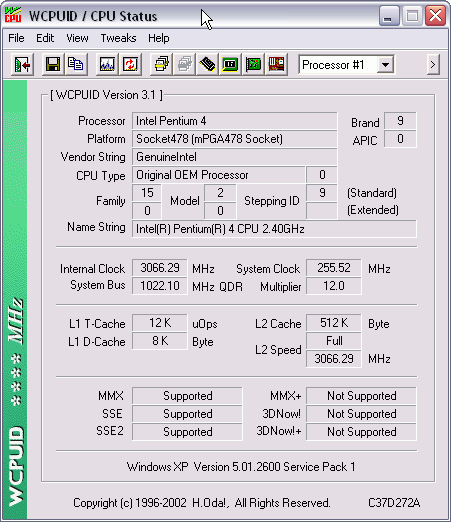
Shuttle has without
a doubt raised the bar regarding BIOS implementation in SFF system with the
release of Shuttle SB61G2. Never before have we been greeted with a wealth
of overclocking features in a SFF barebone. We have also discovered that it’s
not just empty threats – the Shuttle SB61G2 is a great overclocker despite
its size. But extra caution should be taken when overclocking these systems
and especially with voltage increments as heat output rises.
Shuttles Smart Fan is also a very useful feature that fits perfectly in a
barebone. Both noise and heat levels can be kept at an optimal level if Smart
Fan is used correctly.
We could opt for even higher FSB adjustments in the BIOS as the system clearly
didn’t have any problems running at bus speeds over 250MHz. In context
though, it really seems more like a bonus and Shuttle may even raise the adjustments
in future BIOS releases.
Shuttle has done an exceptional job with the BIOS and overclocking features
with its Shuttle SB61G2. In the SFF market today, you won’t find anything
that can rival this wealth of options and settings.
|
BIOS
and Overclocking |
||
| We take a closer look at the functional and estetic design of the barebone. Ease of use is a very important factor. |
|
|
|
Test
systems |
|
|
Hardware
|
|
| CPU: |
Pentium
4 2.4Ghz (800MHz FSB) |
| Mainboard: |
Shuttle |
|
RAM:
|
2
x 256MB GeIL PC3500Ultra |
|
Other
hardware used in all our test systems |
|
|
Graphics
card: |
Gigabyte
Radeon 9700 Pro 128MB @ 325/620MHz |
|
Harddrive:
|
60GB
IBM 60GXP |
|
Software
|
|
| Operative system: |
Windows
XP Professional SP1 |
| Resolution: |
1280x1024x32bit,
85Hz |
| Drivers: |
Catalyst
3.2 DirectX 9.0a Intel chipset driver 4.30.1006 Intel Application Accelarator 2.3 |
|
Test
programs: |
Quake
3:Arena v1.32 Unreal Tournament 2003 demo v.2206 3Dmark2001 SE 330 Comanche 4 benchmark SPECviewperf 7.1 Winace v2.20 Audioactive Production Studio 2.04j (Fraunhofer II encoder) SiSoft Sandra 2003 WCPUID |
In our performance
tests, we have used three different platforms, all with support for Intel’s
800MHz FSB CPUs. Along with the Shuttle SB61G2 that uses Intel’s 865G chipset,
we have representatives for both Intel 865PE and 875P chipsets, ABIT IS7 and
ABIT IC7-G.
During our testing, all systems used memory timings of 2-5-2-2 and if other
performance related settings where available, those were also activated.
Before we continue
with our performance tests, we checked the actual clock frequency of the systems.
| |
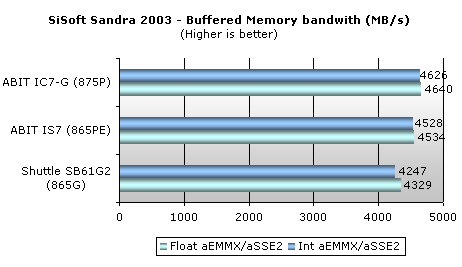
We
start off with the buffered benchmark in SiSoft Sandra 2003, and the differences
in this test are relatively small. ABIT IS7 pulls slightly ahead of the Shuttle
barebone with it’s Game Accelerator technology, ABIT’s answer to the
Canterwood chipset’s PAT. Shuttle has not yet jumped the “PAT train”
with it’s Springdale based motherboards and the Shuttle SB61G2 can’t really
keep the same pace as ABIT IC7-G and IS7.
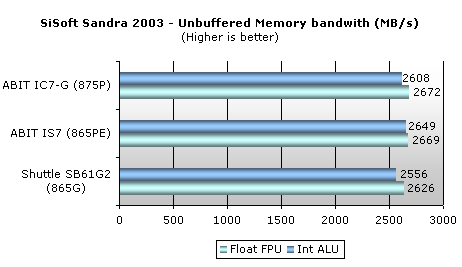
We see a similar pattern
in the unbuffered test but with even more tangible margins.
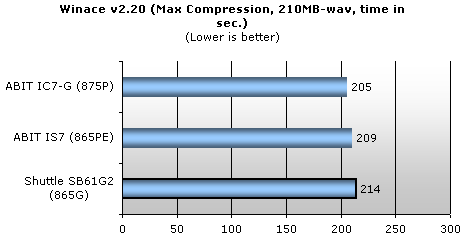
File
compression is a very demanding task for a computer today and it puts
heavy load on especially
the memory subsystem. This is quite easy to see as the results relate very
well with the ones we saw in our memory benchmarks.
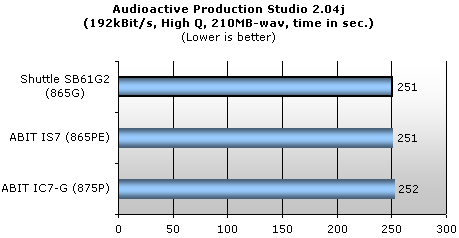
MP3 encoding
is mostly dependent on pure CPU power and that’s why the results are
more or less identical.
| |
Quake
3 has since a long time ago gone from a graphics demanding application to
a good measurement for CPU and memory performance. The differences in this
test are very slim and ABIT IS7 actually takes the top spot with the smallest
margin thanks to the Game Accelerator technology.
Shuttle SB61G2 though is breathing at the neck of the ABIT board.
| |
Once
again there are very small margins between the three systems and ABIT
IC7-G
takes the top spot just ahead of the two Springdale boards.
| 3D tests |
| |
Comanche
4 has proven itself to be quite dependent on CPU speed and not pure graphic
performance. As in the earlier tests the differences are very slim and yet
again the ABIT IS7 wins by a hair. The Shuttle system is putting up a good
fight despite the absence of any PAT resembling optimizations.
| |
The
same pattern is visible in 3Dmark and once again the two ABIT boards swap
places.
The
advanced 3D benchmarks are performed by SPECviewperf 7.1. For those of
you that aren’t
familiar with SPECviewperf, it is a benchmarking program that contain 3D
renderings from six different 3D applications from today’s market that
are used in professional situations. Following tests are run:
|
|
||
|
|
||
|
|
||
|
|
||
|
|
||
|
|
These
benchmark tests are run in windows, and are therefore affected by the system’s
desktop resolution. During all our tests, we used a resolution of 1024x768x32
and a frequency at 85 Hz.
| |
| |
| |
| |
| |
| |
As in the
previous tests the differences between the three platforms are really slim
even in SPECViewperf 7.1 and they are changing places trough out the test
suite.
The performance of Shuttle
SB61G2 can be summarized in two words, very good!
For those that hasn’t gone trough all of the benchmarks in the review
we can say that Shuttle SB61G2 is in fact beaten in most test by the two
ABIT
boards but often with the smallest of margins. We should the keep in mind
that we have compared the Shuttle SB61G2 against two of the best performing
motherboards to date. ABIT IC7-G with the Cantrwood chipset and ABIT IS7
with ABITs Game Accelerator technology that improves the Springdale chipsets
performance
significantly, and has much in common with Intels own PAT optimizations.
The performance isn’t the best on the market but certainly not far
from it and it isn’t impossible that Shuttle also releases new BIOS
versions that will improve the performance further.
For an ordinary user there will not be any noticeable differences between
the Canterwood and Springdale chipsets and Shuttle SB61G2 receives a very
respectable grade in this category.
|
Performance
|
||
| In-depth tests show how the motherboard’s performance is standing up to competitive products on the market. |
|
|
With
the excellent overclocking potential of Shuttle SB61G2 it would feel quite
odd
not to give you any figures in an overclocked environment. That’s why
we did some quick tests that might show you the potential performance increase.
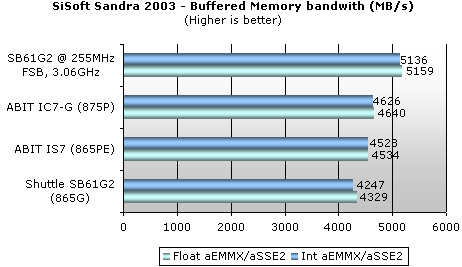
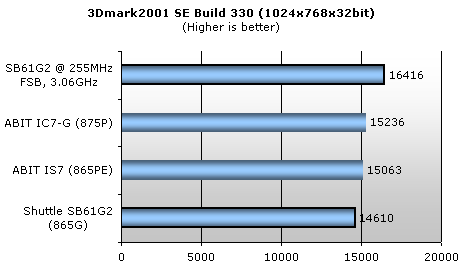
We can see
some noticeable performance increases and free performance is always appreciated!
Shuttle has once again
raised the bar for the SFF market and at this moment we feel that Shuttle
SB61G2 hasn’t any real competition.
The most obvious reason is the 800MHz FSB support that no other barebone is
yet to offer. Utilizing Intel 865G (Springdale) chipset we’re also greeted
with impressive performance that has no problem rivalling that of comparable
desktop solutions. The performance is not quite up to par with Intel’s
875P (Canterwood) chipset but this just might change. Several motherboard
manufacturers have released BIOS updates to there Springdale motherboards
that offer significant performance improvements, ABIT IS7-G is a prime example.
Its not impossible that Shuttle does the same thing with the SB61G2 and raises
the performance even more. The differences between Springdale and Canterwood
are very minor even without these BIOS updates and thus nothing you will notice
in real life.
The Shuttle SB61G2 is
not only the best performing SFF barebone but also the most feature packed
system to date. As the motherboard chipset uses Intel’s ICH5 south bridge
in conjunction with the 82865G GMCH north bridge most features have native
support within the south bridge it self. Everything you could ask for is supported,
2 x SATA150, 6 x USB2.0, 2 x FireWire, 10/100Mb LAN, 6-channel sound and integrated
graphics (Intel Extreme Graphic 2).
This is quite impressive for an ordinary PC and not to mention a SFF barebone.
Shuttle has done
a very good job with the design of Shuttle SB61G2 and a good visual appearance
is certainly positive as this system just might end up in your HiFi rack as
an HTPC.
With Shuttles I.C.E. cooling and Smart Fan the SB61G2 is quiet but can also
provide very good cooling when needed.
As icing on the cake Shuttle has also included a great deal of voltage adjustments
to the SB61G2 which brings a new dimension to overclocking that SFF barebones
hasn’t explored until now.
When talking about dimensions we can also mention those of the Shuttle SB61G2,
or more precise the lack of. As any other SFF system Shuttle SB61G2 is many
times smaller than ordinary PC’s and makes excellent LAN party rigs
or HTPC systems.
As a matter of
fact this very review was delayed a few days because of a LAN party. In the
beginning of this week NordicHardware attended and sponsored (Network equipment)
one of the world’s largest LAN party’s, DreamHack Summer 2003
in Jönköping Sweden. This year a small sum of approximately 4000
people attended the show and on of them was me myself with this very Shuttle
SB61G2. I was very impressed that the system didn’t crash a single time
in four days where it was under load most of the time. Even though the ambient
temperature was quite high and several other systems had problems in the heat
the Shuttle SB61G2 hadn’t.
Almost everything
about Shuttle SB61G2 feels very thought trough but even the sun has its spots.
The biggest problem and
obstacle for many potential buyers is the high price tag. Shuttle SB61G2 is
in our opinion the best SFF barebone on the market today but the price is
certainly not that attractive. You will be able to find the Shuttle SB61G2
for around $340 US at the time of writing, this is quite a hefty price to
pay if you consider what a comparable desktop system would cost.
Besides the price issue there are some other small flaws that should be mentioned.
Shuttle has chosen not to include any TV-out option on the SB61G2 which we
think is very unfortunate. This will hamper the usability of the integrated
graphics as you will not be able to hook up the system to your TV without
a external AGP graphics card. This problem does relate pretty well with another
problem though, the Intel Extreme Graphic 2 GPU is really sub par and we strongly
recommend that you use a AGP graphics card with your SB61G2.
We didn’t have the time or interest to do a thorough testing of the
Intel Extreme Graphic 2 but we can guarantee that the performance is quite
a step
below that of nVidias NV17.
Shuttle SB61G2
is really one impressive piece of hardware and you might have noticed that
we grow quite found if it during our testing. With very good performance,
overclocking and more features then you can shake a stick at, all cramped
into a puny and stylish looking aluminium chassis its bound to get quite a
few fans.
And we can certainly say that we are one of them, Shuttle SB61G2 is in short
a great product and receives our Editor’s Choice award.

Shuttle
SB61G2
|
Shuttle
SB61G2 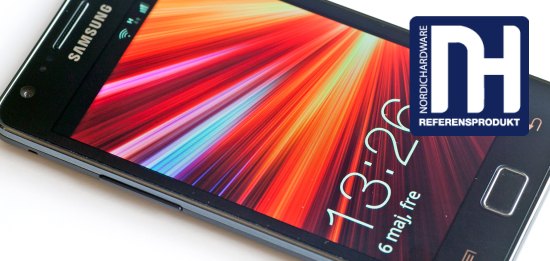 |
|
|
Pros:
+ Impressive performance + BIOS and overclocking features + Loads of features, SATA, USB2.0, FireWire, 10/100Mb LAN, 6-channel sound and more. + Great functional and estetic design + Size, 4 times smaller than a miditower case. + Great cooling Cons: |
|
| Price and availability: |
5.5/10
|
| Features and Accessories: |
9.0/10
|
| Design and user friendliness: |
9.0/10
|
| Size/Cooling and noise: |
8.5/10
|
| BIOS and overclocking: |
9.5/10
|
| Performance: |
9.0/10
|
| Final grade : |
8.4/10
|











